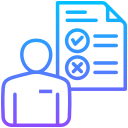Piloting, Change Management, and Rollout
Choose a team with supportive leadership, clear goals, and diverse roles. Keep timelines short and feedback loops tight. Pilot artifacts—rubrics, rater guidance, dashboards—then refine. Success will give you champions who can speak credibly about benefits, common concerns, and practical advice for neighboring teams.
Piloting, Change Management, and Rollout
Explain why you are implementing soft skills assessments, how data will be used, and what support employees will receive. Address anxieties early—especially fears about fairness or punitive use. Offer office hours, sample reports, and FAQs. Transparency turns skepticism into curiosity, and curiosity into participation.






